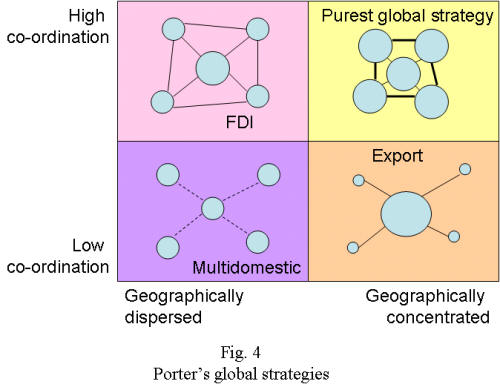 |
 |
|
Stonehouse et al. (2004)Management > Global Strategic Management > Lectures > Independent Research > Stonehouse et al. > The Drivers > Resource-based approach > The Resources > The macro-environment > global/transnational strategy > Global strategies > Strategies - generic/competitive > Generic strategies > Combination > Value system
Value System(For more information, see Porter Changing Patterns of International Competition) Porter's model of global strategy (1986) is based on a generic strategy framework. He argues that a market must be global for a firm to be successful, otherwise it is better to stay at home. Porter discusses the configuration (where) and co-ordination (how) of activities, where the former can be concentrated or dispersed and the latter can be high or low (For the 2x2 matrix, see lecture 6). Below shows the types of global strategy that can be employed, in terms of configuration and co-ordination of activities.
From this, three global management characteristics can be observed:
|
|

